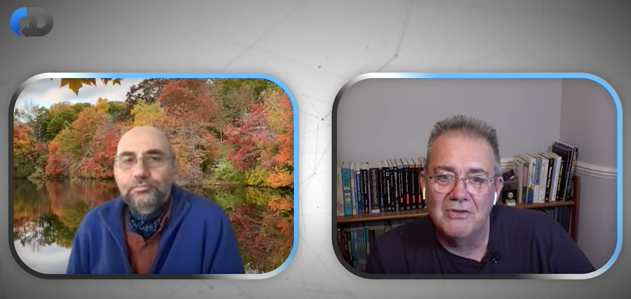tagged by: legacy modernization
Patterns of Legacy Displacement

When faced with the need to replace existing software systems, organizations often fall into a cycle of half-completed technology replacements. Our experiences have taught us a series of patterns that allow us to break this cycle, relying on: a deliberate recognition of the desired outcomes of displacing the legacy software, breaking this displacement in parts, incrementally delivering these parts, and changing the culture of the organization to recognize that change is the unvarying reality.
Legacy Modernization meets GenAI

So far, most attention to Generative Artificial Intelligence (GenAI) in software development is on generating code. But we believe there is as much, if not more, value in understanding existing code - particularly long-lived, large, and complex legacy systems. We have been experimenting with GenAI for modernization with our clients, embodied in a tool called CodeConcise, which combines a Large Language Model (LLM) with a knowledge graph derived from the abstract syntax trees of a codebase. We have seen positive results from this approach in both drawing out low-level requirements and building a high-level explanation of a system.
How to extract a data-rich service from a monolith

When breaking monoliths into smaller services, the hardest part is actually breaking up the data that lives in the database of the monolith. To extract a data-rich service, it is useful to follow a series of steps which retain a single write-copy of the data at all times. The steps begin by making a logical separation in the existing monolith: splitting service behavior into a separate module, then separating data into a separate table. These elements can be separately moved into a new autonomous service.
Using the Strangler Fig with Mobile Apps

Incremental replacement of a legacy mobile application is a challenging concept to articulate and execute. However, we believe by making the investment in the pre-requisites of legacy modernization, it is posible to yield benefits in the long term. This article explores the Strangler Fig pattern and how it can be applied to mobile applications. We chart the journey of an enterprise who refused to accept the high cost and risk associated with a full rewrite of their mobile application. By incrementally developing their new mobile app alongside a modular architecture, they were able to achieve significant uplifts in their delivery metrics.
Uncovering the Seams in Mainframes for Incremental Modernisation

Mainframe systems continue to run much of the world's computing workload, but it's often difficult to add new features to support growing business needs. Furthermore the architectural challenges that make them slow to enhance also make them hard to replace. To reduce the risk involved, we should use an incremental approach to legacy displacement, gradually replacing legacy capabilities with implementations in modern technology. This strategy requires us to introduce seams into the mainframe system: points in which we could divert logic flow into newer services. In a recent project we investigated several approaches to introduce these seams into a long-lived mainframe system.
How to break a Monolith into Microservices

As monolithic systems become too large to deal with, many enterprises are drawn to breaking them down into the microservices architectural style. It is a worthwhile journey, but not an easy one. We've learned that to do this well, we need to start with a simple service, but then draw out services that are based on vertical capabilities that are important to the business and subject to frequent change. These services should be large at first and preferably not dependent upon the remaining monolith. We should ensure that each step of migration represents an atomic improvement to the overall architecture.
Engineering Room Conversation with Dave Farley

My old colleague Dave Farley has been running an increasingly popular YouTube channel on software development. It's good material, very much in line with my own views, after all his experience is a big influence on my thinking. We talk about a range of topics about the current role of software engineering, focusing particularly on the three large-scale writing projects I'm supporting at the moment: Data Mesh, Patterns of Distributed Systems, and Patterns of Legacy Displacement.
Asset Capture
Asset capture is a strategy for developing a StranglerFigApplication. You can think of many applications as managing a key set of assets. A payroll system looks after employees, a trading system looks after trades, a leasing system looks after leases. To gradually cut over to a new system, you can begin by identifying a subset of assets that you'll start with the new system. Often the best assets to start with are either simple assets (because they are quick to get going) or those that have needs that are particularly difficult to handle with the old system.
History Is Not Bunk
History is more or less bunk
-- Henry Ford
I recently got an unhappy email from a reader of UML Distilled. It's never a good start to my day when an irate reader regrets buying, let alone reading, my words of occasional wisdom. But there was something particularly interesting about this reader's beef. His concrete complaint was about my 'unnecessary history'.
Legacy Seam
When working with a legacy system it is valuable to identify and create seams: places where we can alter the behavior of the system without editing source code. Once we've found a seam, we can use it to break dependencies to simplify testing, insert probes to gain observability, and redirect program flow to new modules as part of legacy displacement.
Nashville Project
I spent some time recently with one of my favorite ever Thoughtworks projects. It's a project that started in 1998, using then new J2EE technology. Over the years it's had a fascinating history: starting with EJBs, ripping them out, going offshore to Bangalore, coming back to Chicago. Many people have moved in and out of the project and the project has varied in head-count between 6 and 60. Overall the project has had over 300 staff-years of effort on it and weighs in at around 100 KLOC.
Strangler Fig

During a vacation in the rain forests of Queensland in 2001, we saw some strangler figs. These are vines that germinate in a nook of a tree. As it grows, it draws nutrients from the host tree until it reaches the ground to grow roots and the canopy to get sunlight. It can then become self-sustaining, and its original host tree may die leaving the fig as an echo of its shape. This gradual process of replacing the host tree struck me as a striking analogy to the way I saw colleagues doing modernization of legacy software systems. A couple of years later I posted a brief blog post about this metaphor. While I've not used the term in my writing since then, it caught attention anyway, and the term “Strangler Fig” is now often used to describe a gradual approach to legacy modernization.
